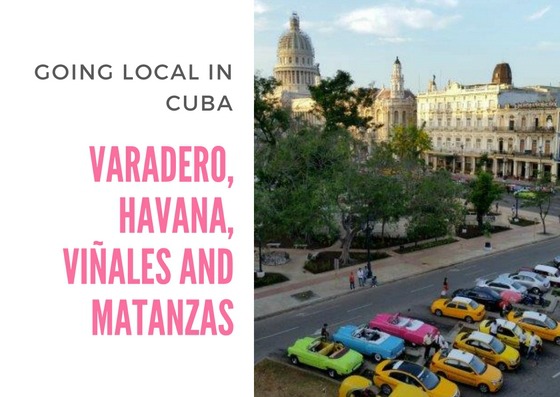It’s so tempting to just hang at the pool at an all-inclusive but explore a bit, and you’ll find some rare child-friendly gems in western Cuba. Experience more of the real Cuba on this circle route from the beaches of Varadero through art-filled Havana, to the lush Viñales Valley, and historic Matanzas. Here’s where to go, where to stay and where to find fantastic Cuban food.
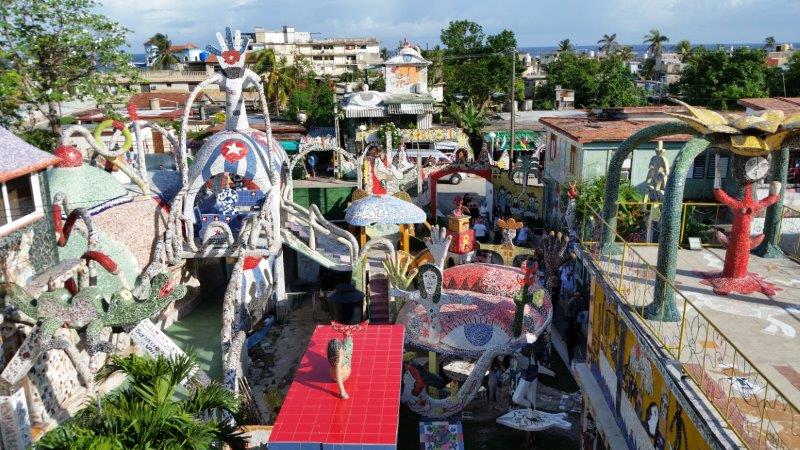
Walk into the Fusterlandia wonderland in Havana – photo Debra Smith
Kid Friendly Havana
Step One: Grab a cab to Havana. It’s a short 2 ½ hour drive from Varadero along the Via Blanca highway. Stop halfway at the Bacunayagua Bridge, the highest bridge in Cuba for a photo op at this scenic viewpoint. If you’re not driving, check out the restaurant’s speciality – refreshing pineapple Pina Coladas. Taxi tip: the old chrome cruisers are beautiful, but suffer from regular breakdowns and no A/C. Take one in Havana instead.
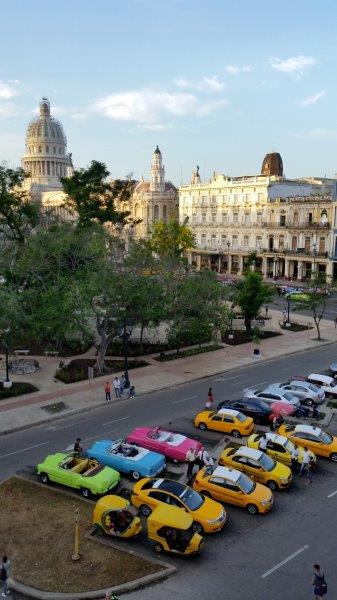
Vintage rides are easy to find outside the Iberostar Parque Central – photo Debra Smith
Stay: Splash out at the Iberostar Parque Central right in the middle of Old Havana. Catch an early walking tour of the four central plazas, a treasure trove of five-hundred-year-old churches, baroque hotels, museums and public art. Kids will love a dip in the rooftop pool with its bird’s-eye view of this incredibly photogenic city and the tiny architectural model of the hotel on the mezzanine. Candy coloured vintage cabs line up right outside the doors.
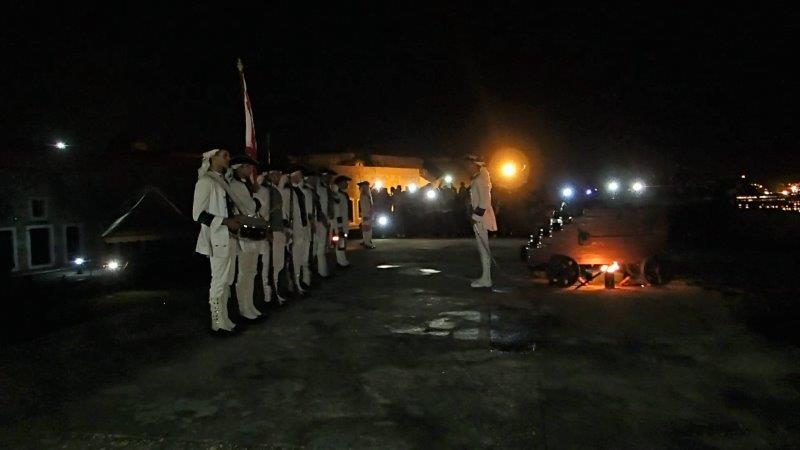
Arrive at least an hour early for The Cannon Ceremony at Fortaleza de San Carlos de la Cabaña – photo Debra Smith
See: Fortress fans can enjoy two of the best at Havana Harbour. Head to Castillo de Los Tres Reyes del Morro around sunset for a panoramic view of the city and a peek inside this 16th-century treasure, then head for nearby La Cabana, the largest fortress in the Americas. An exciting historical re-enactment is performed there every night. Cover your ears for the ceremonial cannon blast at 9 p.m.
Dine: La Divina Pastora Restaurant, near the military park, has quite a few cannons of its own but these are available for closer inspection. Their shady outdoor patio overlooks the harbour, and they specialise in fresh lobster.
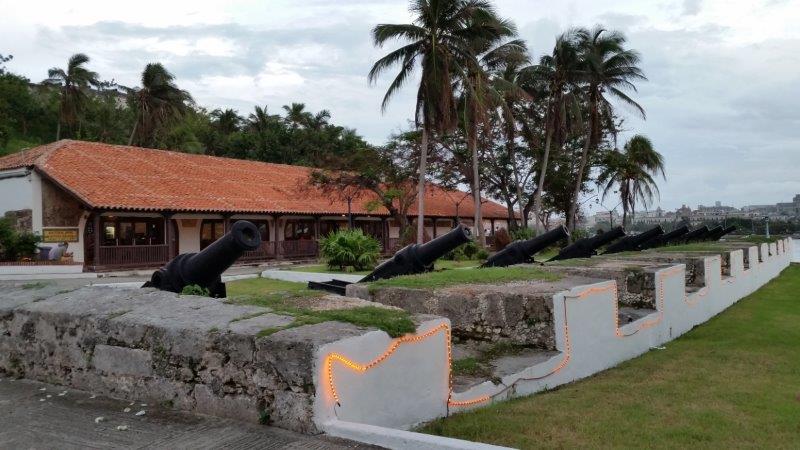
Cannons at the ready at La Divina Pastora Restaurant – photo Debra Smith
Detour: On your way out of Havana, be sure and stop at Fusterlandia. A rainbow coloured explosion of mosaic art covers over 80 buildings in the formerly economically depressed suburb of Jaimanitas. It is the life’s work of artist Jose Fuster who had the vision to transform his neighbourhood, one house at a time, starting with his own. His fanciful images and sculptures run riot over every available surface from walls, floors, rooftops and staircases to streetlights. Kids will love it.
Going to the Country: Havana to Viñales
Step Two: The 2 ½ hour drive from Havana to Viñales will take you through some of the most breath-taking scenery in Cuba. Rolling hills blanketed in thick green vegetation and dotted with Royal Palms soon give way to a flat valley floor punctuated with 1000-foot-high round-topped outcrops called mogotes. Made of soft limestone and riddled with caves, they are found almost nowhere else on earth, making the Viñales Valley a designated UNESCO World Heritage site.
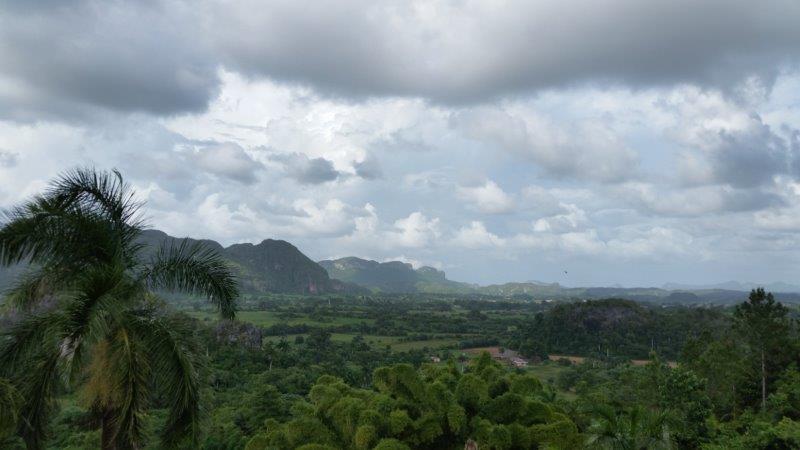
The lush Vinales Valley has rich farmland and mogotes covered in Royal palms – photo Debra Smith
Stay: The small town of Viñales is showing signs of a tourism boom. Traditional one-story wood and plaster homes are freshly painted in brilliant colours. Restaurants and cafes can be found on every corner, and a small handicraft market runs near the church square every day. Homeowners rent out a room or two and often include meals in the price. Called casa particulares, there are over 300 of these homes listed on Air BnB. Find one that fits your family for the best hotel experience in Viñales.
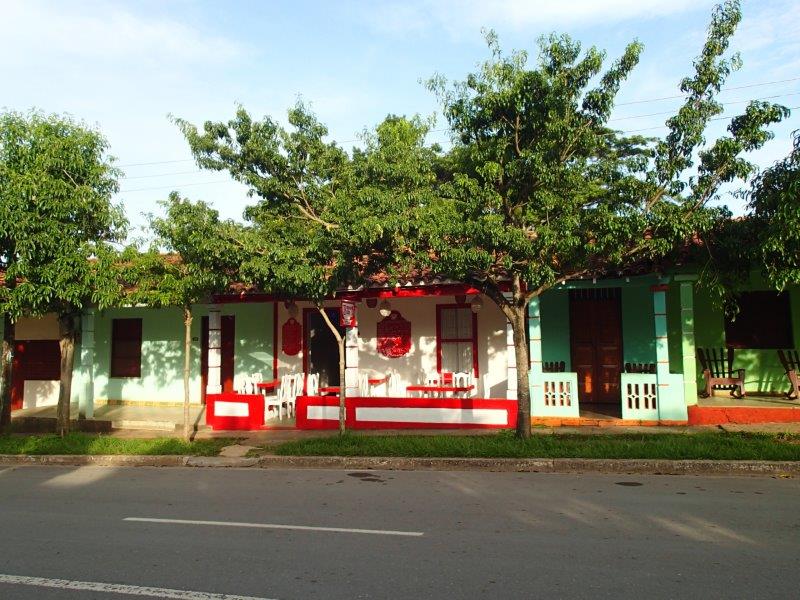
Private home stays at casa particulars are a popular option in Vinales – photo Debra Smith
See: Take a walking tour of the small farms, called finca in Spanish, with local resident and tour guide Douglas Pino Correa. Ask for him at the tourist office in Viñales. Douglas is an expert on flora and fauna of the valley and can introduce you to local farmers along the way. Many of them still use majestic black water buffalo to plough the thick red soil for crops. There are also rock-climbing treks on the mogotes, bicycle, horseback riding and bird watching tours available.
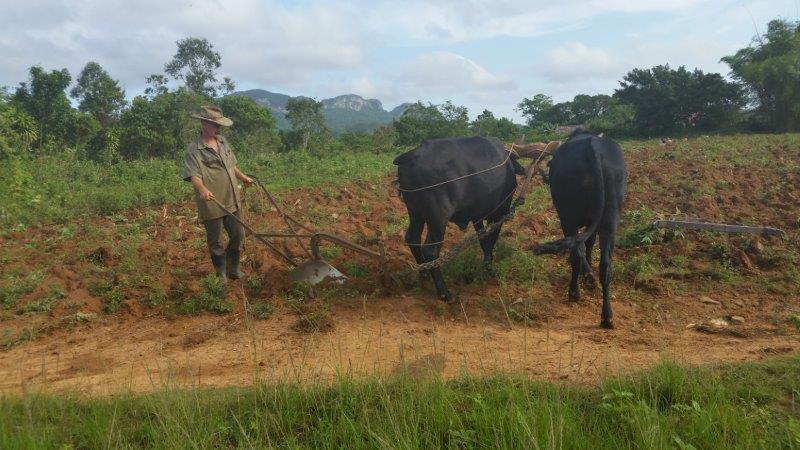
Farmers still till the land using water buffalo – photo Debra Smith
Dine: Near-perfect growing conditions mean that fresh, pesticide-free organic produce can be found throughout the valley. For a traditional Cuban meal served family style, try Ladera del Valle. Along with an avocado salad, roasted cassava and black beans and rice (of course!), the house speciality is roast pork prepared in a variety of delicious ways.
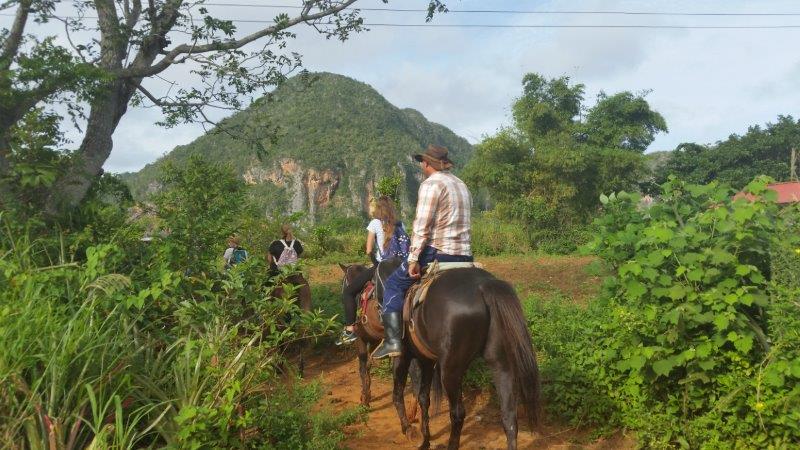
Touring the Vinales Valley on horseback is easy to arrange- photo Debra Smith
Detour: The Las Terrazas community, located in the Sierra del Rosario Biosphere Reserve is a great place to mingle with Cuban families. An interpretive centre at Curujey Ranch will give you an overview of this huge area which was one of Cuba’s first major reclamation projects. There’s a model cooperative lakeside town with schools, farms, coffee plantations and Cuba’s first zip line. Take a picnic lunch and enjoy a dip in the gentle waterfalls of the San Juan River. “How can you tell a tourist from a Cuban?”, asks our tour guide. “For one thing, Cubans never do that”, he says, pointing to a gentleman who is balancing on one foot, clutching a towel around him and trying to shake off his bathing suit at the same time. “Also, he doesn’t know that the change rooms are right behind him”.
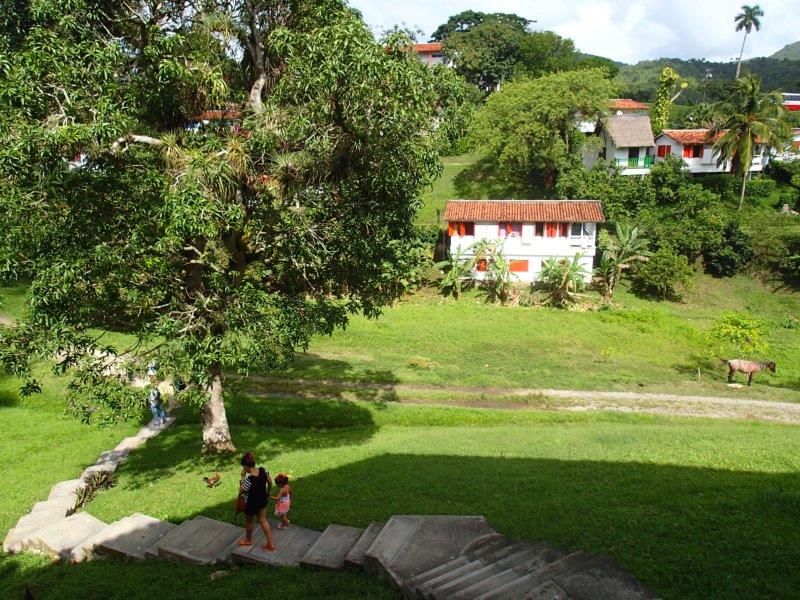
Stop for a cup of locally grown coffee at the town of Las Terrazas – photo Debra Smith
Back to the Beach: Matanzas City to Varadero
Step Three: Stop into Matanzas City on your way back to Varadero. This often-overlooked harbour town, just an hour from the hotel zone, has some treats in store. Known as the City of Bridges, for the 17 bridges that cross its three rivers, it has the only fully preserved 19th century French compounding pharmacy in existence today, the Matanzas Pharmacy Museum.
Stay: Kids from 4 to 12 will love the games, theme parties and activities at the Star Friends Kids Club at the new Iberostar Bella Vista Varadero. There’s lots of water fun with two wading pools complete with dragon and whale slides and as well as supervised beach activities. Parents will love the huge rooms, nightly entertainment, six restaurants, five bars and two Olympic sized swimming pools.
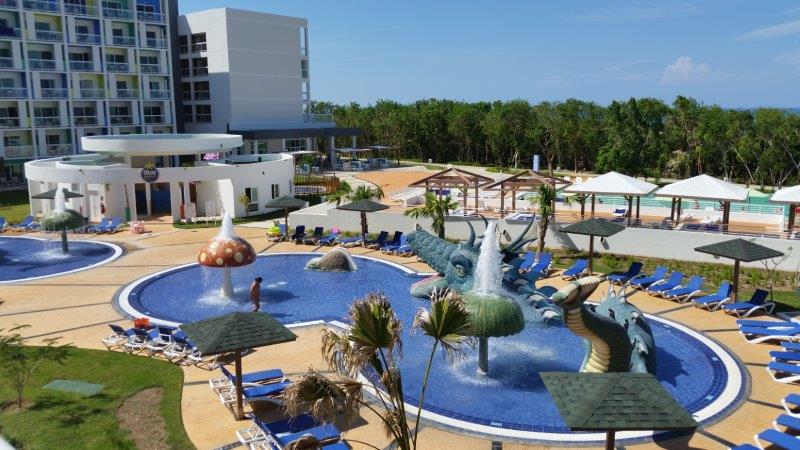
There are two fanciful wading pools for kids at the Bella Vista Varadero – photo by Debra Smith
See: Matanzas City offers a rare glimpse into the “kitchen religion” of Santeria at the San Severino Castle and Museum of the Route of the Slave. This UNESCO World Heritage site is the oldest building in Matanzas, dating to 1693. Over the next 300 years the fort was used as a garrison, a home for governors, a prison and a jail. The museum traces the tragic history of slavery in Cuba and celebrates the present-day influence and contribution of the African people by promoting their culture, art and spiritual expressions. It is one of the few places where visitors can find ritual objects, drums, and costumes of African based Santeria nature cults on display.
Dine: A ten-minute cab ride from the hotel zone in Varadero, Terraza Cuba is offering up what can only be described as a gourmet Cuban dining experience. Previously owned by a Canadian couple, this up to the minute restaurant raises delectable interpretations of classic Cuban fare to a new level. Service is impeccable and special touches abound, like their small glass enclosed bar with an air filtration system where you can enjoy an after-dinner rum and cigar pairing. Side note: reading glasses are provided so you can see the bill – which will be very small by Canadian standards.
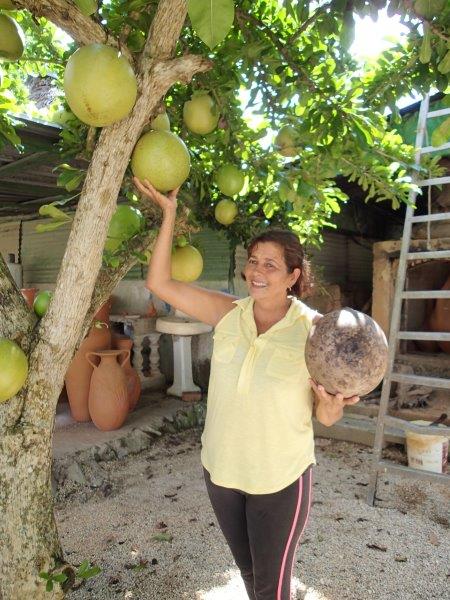
Odalys Correa brings her artistic talents and love of the land to Finca Coincidencia – photo Debra Smith
Detour: If you have time for just one day trip from Varadero, ask your concierge about a Cubatur excursion to Finca Coincidencia (Coincidence Farm), a 40-minute drive from the hotel zone. Hector Correa, an agricultural engineer and his wife Odalys, an art historian, have created a magical place where pottery and sculpture mingle with orchards and cornfields. Together with their three sons, they have transformed thorny ground into an oasis for over 500 varieties of medicinal, ornamental and endangered trees, plants and flowers. Visitors can tour the outdoor sculpture garden (they have hosted the Cuba biennale art festival), the pottery studio and the farm before joining them for a delicious home-grown lunch. “You eat what we eat”, says Hector proudly. The farm is a whirlwind of activity. Hector and Odalys raise chickens, pigs, turkey and bees in addition to running the studio. “I don’t have peace, but I have happiness”, Hector says.
Find your happiness in western Cuba. For more information check the Go Cuba website.
Debra Smith is a Calgary travel writer. She was hosted by the Cuba Tourist Board, but as always, her opinions are her own.

